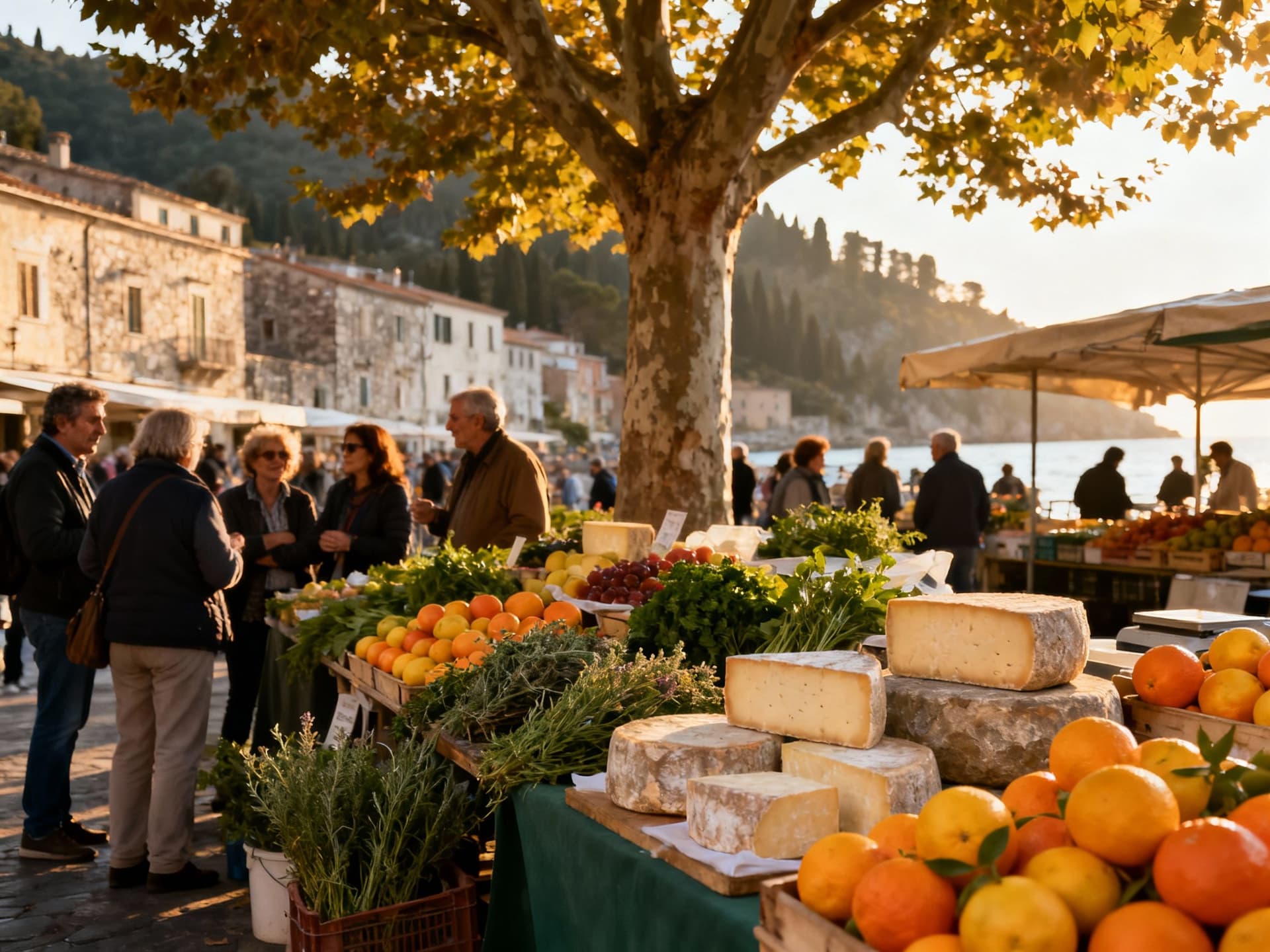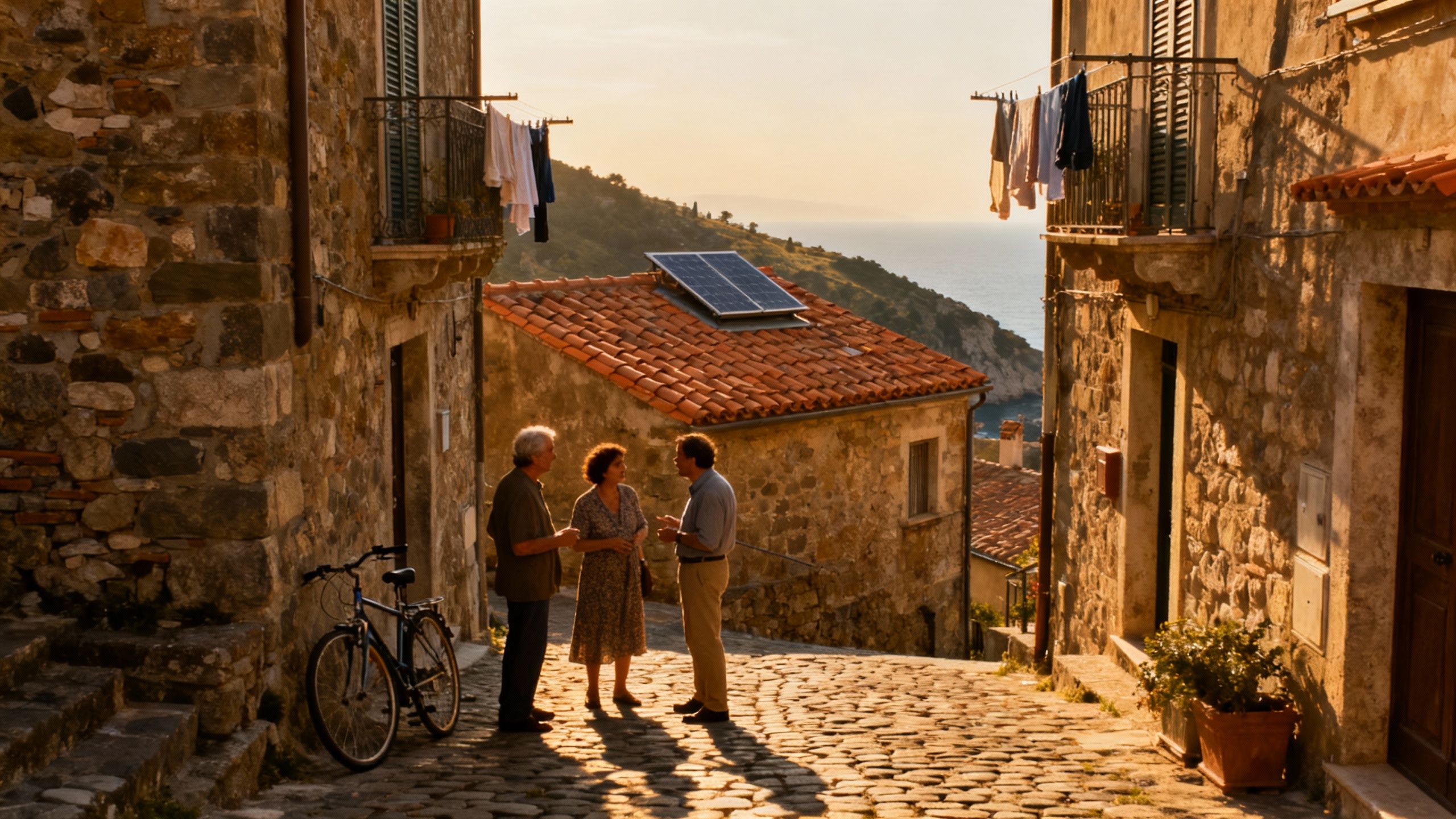Sea, Forest, Stone: Where Italy’s Value Hides
Italy’s forested coasts offer year-round, nature-rich living — but smart buyers pair seasonal immersion with geotech, energy checks and local stewardship to protect lifestyle value.
Imagine sipping an early-morning espresso on a stone step in a Ligurian borgo, then hiking a shaded path through maritime pines to a cliff that drops into turquoise water. That dual rhythm — forest and sea, slow village mornings and alive coastal afternoons — is what living in Italy’s verdant coastlines feels like. It’s why buyers who love biodiversity and seasonal life are drawn here, and why the right neighbourhood choice matters as much as the right house.
Living the Italy of Forested Coasts and Stone Villages

Italy is rarely one place at once. From Liguria’s wind-sculpted pines to the cork oaks around Tuscany’s Etruscan hills and the limestone coasts of Cilento, each green coastline carries its own daily rituals: morning markets, siestas under olive trees, and aperitivi as the evening light softens. These regions pair rugged coastal life with forests close enough to make year-round outdoor living effortless — a quality many buyers seek but few agents emphasise.
Neighbourhood spotlight: Liguria’s Cinque Terre fringe & Levante villages
Walk past terraced gardens in Levanto and you’ll find small cafés serving focaccia warm from the oven, fishermen mending nets, and houses built into the slope with green roofs of wild rosemary and thyme. These fringe villages offer quieter alternatives to the tourist-clogged towns — lower year-round foot traffic, stronger community ties and properties that lend themselves to low-impact renovations using local stone and reclaimed timber.
Food, markets and ritual: how local life shapes property use
Picture weekly markets in Ostuni or a chestnut festival in a hilltop borgo: these events animate neighbourhoods and raise demand for homes that can host seasonal life — kitchens with room for preserving, shady terraces for late summer dinners, courtyards for drying local herbs. For buyers, that means property choices are often about function as much as form: a courtyard matters if you want to live with seasonality.
- Lifestyle highlights to seek in verdant Italian coastal regions:
- Morning market streets (e.g., La Spezia Saturday market) and cafés that open early
- Access to coastal trails and forest paths within a 20–30 minute walk
- Properties with shaded courtyards, pergolas or terraces for outdoor living
Making the Move: Lifestyle Meets Practical Reality
The dream of a coastal-forest life is real, but the market is also moving. National data show house prices rose year-on-year in 2025 even as sales volumes changed across regions, and demand for energy-efficient homes is pushing premiums for green-rated properties. Translating a lifestyle wish into a purchase means matching seasonal living needs with property realities: insulation for cool forest nights, water access and erosion awareness on cliffs, and planning rules for renovating in protected landscapes.
Property styles that suit verdant coastal life
Stone cottages with thick walls offer cool summers and suit low-energy retrofits; terraced homes on slopes let you step from kitchen to garden. If you want year-round comfort, prioritise properties with good insulation, solar-ready roofs and rainwater capture potential — small investments that change how you live with the land. Local materials like pietra serena or local limestone make for authentic, durable restorations that reduce embodied-carbon when repaired rather than rebuilt.
Working with local experts who know the green coastline
- How local agencies help translate lifestyle into a resilient purchase:
- They identify microclimates and advise on energy retrofits appropriate to forested coasts.
- They flag coastal erosion, avalanche or landslip history and necessary surveys before offer.
- They connect you to local craftsmen skilled in traditional stone, lime plaster and timber repairs.
Insider Knowledge: What Expats Wish They’d Known
Expat buyers often report that the romance of an olive grove eclipsed practical questions: how seasonal life affects utility use, how neighbours expect gardens to be tended, and how local rules treat protections in coastal or forested zones. Short-term rental rules and proposed tax changes have become part of the conversation, especially in tourist-facing towns — another reason to see an accountant and local lawyer early.
Cultural integration, language and daily routines
Join a harvest or market day and you’ll meet neighbours faster than at any embassy event. Learn a few market phrases, attend the local festa and be generous with seasonal produce — these rituals open doors. For many internationals, small daily acts — helping at the local olive press, buying bread from the same forno — matter more than formal networking when building a life here.
Long-term stewardship: how a property grows with you
A house near the forest becomes a stewardship project: managing trails, respecting fire seasons, and encouraging biodiversity in your garden. Consider properties that allow low-impact extensions rather than speculative rebuilding; that way your home can evolve with renewable tech, increased insulation and native planting while preserving local character.
- Practical checks to run before you fall in love:
- Local planning restrictions for protected coasts and woodlands
- Evidence of flood/landslide history and required geotechnical surveys
- Energy performance certificate (APE) and potential for solar or heat-pump upgrades
- Step-by-step move-first checklist for verdant coastal buyers:
- 1. Visit off-season (autumn or early spring) to sense year-round life and maintenance needs.
- 2. Commission environmental and geological surveys focused on coastal and forest risks.
- 3. Ask local agents for examples of recent green retrofits and their long-term cost savings.
- 4. Secure local counsel and an accountant familiar with municipal rules and rental taxation.
Conclusion: If you’re drawn to Italy’s green coasts, do not mistake postcard summers for the full story. The real magic is seasonal — citrus blossom in spring, mushroom foraging in autumn, quiet fog-silvered mornings in winter — and the smartest purchases are those that respect both the ecology and the craft of place. Work with an agency that knows local microclimate, traditional building craft and long-term stewardship. Then, the house isn’t just a home: it’s part of the landscape you’ve come to love.
Danish relocation specialist who moved from Copenhagen to the Algarve; supports families with seamless transitions, local partnerships, and mindful purchases.


